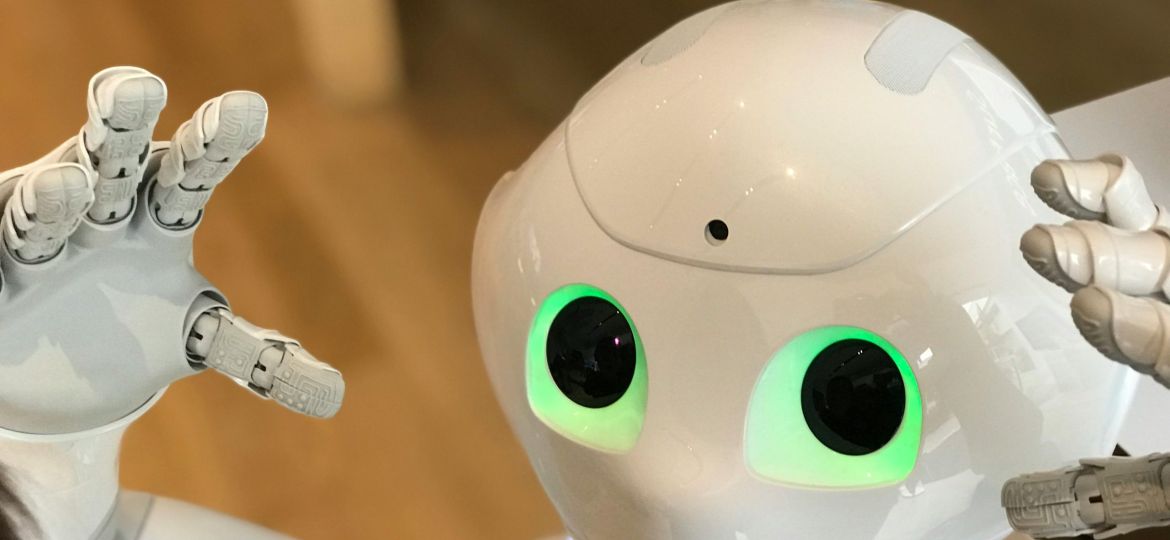
Remember Frank from Robot & Frank? Initially resistant to his son’s well-meaning gift of a home-care robot, Frank grumpily declares he doesn’t want or need robotic help. But gradually, the robot becomes an integral part of his life – not just for medical needs, but as a genuine companion who doesn’t judge, never gets frustrated, and remains endlessly patient.
The film captured something profound about human nature: our capacity to form meaningful bonds with non-human entities when they meet our deepest needs for companionship and understanding. What seemed like Hollywood whimsy in 2012 has become documented reality in 2025.
Frank’s story resonates because it mirrors what researchers are finding in real-world studies. Just as Frank discovered his robot companion could be “just like an old buddy,” today’s families are witnessing similar transformations—sometimes in ways that surprise everyone involved.
Press play on the video below to watch the cinematic trailer for Robot and Frank:
What This Really Means for Your Family
If you’re worried about how your parents will manage as they age—or are thinking ahead to your own future—the explosion of robotics and AI in healthcare offers solutions. For all my sense of trepidation about our society becoming over-reliant on non-sentient beings, this is an area worth exploring.
There’s a huge amount of innovation, imagination and—yes—empathy going on in health tech aimed at the very old. Some may miss the mark; but the failures and absurdities should not obscure the solutions now being considered to make life better for families wrestling with the demands of an ill parent.
“The staff told of people who had not said a word for years that started talking to the cat and to each other about the cat. Some who were very anxious were able to reduce the amount of sedative medication they took because of the calming influence of the robot animal.”
This is particularly the case where a relative has fallen prey to dementia. The truth is, especially in the later stages, the scaffolding of adult-style thinking falls away, leaving your relative in a far more vulnerable position.
To witness the transition is immensely distressing and stressful. The relative or person concerned may well end up without speech; unsurprisingly, as their capacities regress, their behaviour may deteriorate too.
The explanation for the decline in behaviour is not hard to unravel. Like young children yet to speak, an older relative who has become non-verbal may adopt toddler-like behaviour as they struggle to communicate whatever it is they are feeling.
I remember trying to convey to others what was happening to my own Mum and, by extension, to myself. I’d say half in jest:
“When I first came to look after her it was like dealing with a bolshy teenager. Then I had a tween, then a six- to seven-year-old, and finally a very young child.”
It was true. In an inversion of everything I’d known about her, I could now see what she’d been like as a toddler. For example, she would shake her head vigorously or adopt a particularly stubborn look whenever she did not like something.
Trouble is, you’re not a mind reader. Mostly it’s frustration speaking rather than intentional aggression (a knowledge that doesn’t necessarily make it any easier to handle or process). As with young children, their inability to communicate may result in impulsiveness and anger. All that stays constant is this: as a carer, it is pointless to look for the type of response that equates to adult control.
It’s good to recognise this because against this context it becomes easier to understand the success of particular robots or other products designed with older people in mind. We can likely all remember our own small selves. We found it easier to transfer mini-storylines and our own longings onto our dolls, toys and pets. The suspension of reality that we grew out of seems to reapply to older people shorn once again of the ability to pinpoint words and hold conversations.
There is no sugar-coating the difficulty; psychological adjustments are occurring. Sometimes the person with dementia is a danger to themselves, other times not just to themselves but also to those trying to help them.
The question that rapidly arises is: what character type is dementia giving your relative? Are they within range of what they once were, or are they becoming unrecognisable? The cast line-up of character types that emerge is very varied. Some families escape lightly. In this regard, I’ve been lucky on the three occasions I’ve been close to someone dying. Coping with a mother or father who conforms to the dippy and batty stereotype (alternatively forgetful and fretful) is a whole lot easier than managing a terrifying mixture of Roald Dahl’s Miss Trunchbull, Frankenstein and Emperor Nero rolled into one.
Sadly, I know of families who have been terrorised by their elderly parent who once upon a time would barely say boo to a flea. When that happens, you will undoubtedly need to take remedial action and get help. One woman I became friendly with had a mother-in-law who seemed possessed by a demon. She would rampage through the house, sweeping cans of food to the ground, shouting about the wickedness of the family. Somehow they managed, but it wore them down.
Don’t knock or underestimate how useful these robots can be. In Sweden, more than half of the municipalities have purchased companion robots. The robot animals have some mobility, can make sounds and react to people. The majority are used in dementia care homes, but many are also used in short-term care homes or ordinary care homes for older adults. They cost no more than a few thousand Swedish krona.
Their growing success is tied to the relentless vigilance that is required of families coping with the complex needs of a relative with dementia. Depending on the gravity of the situation, they may stand between you and your own sanity.
The daily challenges are all too familiar: your mother is looking mutinous. She doesn’t want to exercise alone anymore. Dad’s not much better either. His once legendary motivation has plummeted since so many of his friends have moved away from the neighbourhood. Others whom he continued to rely upon are now too frail or dead. Clearly, they are lonely. They’re also spending more time sitting, creating a cascade of physical and emotional decline. You want to help, but you can’t be there every day without overhauling your life and giving up your job.
It’s in these types of scenarios that we’re beginning to see solutions emerge that are—without the criminal twist—not dissimilar to the storyline of Frank: a robot to serve you.
Rudy, invented by Anthony Nunez, who witnessed his grandmother fall and lose her independence
The robots and devices being introduced as potential solutions are no longer clunky contraptions from science fiction. Rather, a portion of them may provide a way forward that is more compassionate than overstretched relatives half-heartedly responding. Think of them as patient, tireless companions who never lose their temper or get overwhelmed by caregiving fatigue.
Meet the Robots: Your New Family Members
Before diving into the human stories, you need to understand exactly what we’re talking about when we say “robot companions.” These aren’t the humanoid androids of science fiction—they’re something far more practical and, arguably, more endearing.
ElliQ: The Conversation Starter
The most startling aspect of ElliQ is that it is truly beautiful. ElliQ is a beautiful tabletop object designed by Swiss designer Yves Béhar’s fuseproject for Israeli company Intuition Robotics. The device looks like a small table lamp with an eyeless head that lights up and swivels, consisting of two distinct parts: a “companion” head that moves and lights up, and a separate tablet screen, both mounted on a slim anodised aluminium base.
The name itself tells a story. ElliQ derives her namesake from ancient Norse mythology. In Germanic folklore, Elli, the Norse goddess of old age, champions Thor, the hammer-wielding god of strength, in a wrestling match. The “Q” was added to preserve some honesty to her name (she’s not an actual human), while also adding a social robotics flare: EQ refers to Emotional Intelligence.
What makes ElliQ unique isn’t just her appearance—it’s her personality. ElliQ is a proactive companion that reaches out to the senior with regular interaction, rather than waiting to be asked. She can make jokes, play music (she can even rap when prompted), lead meditation exercises, and track health metrics like sleep, mood, and pain.
The designers were deliberate about avoiding the “uncanny valley” effect. When you have a device that is trying to look like something it is not, there is immediately distance between the device and the user. ElliQ is a beautiful tabletop object. She moves like a machine. She sounds like a machine. She feels like a machine—but she has that one-of-a-kind personality.
PARO: The Therapeutic Seal
PARO is a therapeutic baby harp seal robot. It looks very cute and was designed to have a calming effect and elicit emotional responses from patients who end up in hospital or nursing homes.
Unfamiliar surroundings for those with dementia are particularly frightening. They often talk of being kidnapped and their misinterpretation of what is going on can be terrifying. The inventor makes no bones about it: ‘Paro’ is designed to reawaken memories held by the patient of interacting with different animals as pets, providing a sense of connection that is otherwise lacking.
The scale of identification may differ, but the introduction of Paro into hospital and home settings has, in many instances, been transformative. PARO was created by Dr Takanori Shibata of Japan’s National Institute of Advanced Industrial Science and Technology. He started work on it as far back as 1993.
Paro is based on harp seals Shibata saw in an ice field in northeastern Canada, where he also recorded their cries for Paro’s simulated cries. The choice of a seal was strategic: animals with which humans have less contact are better accepted as robots because we are not familiar with how they behave naturally. “If you try to make a robot in the shape of a cat, for example, people will be disappointed, since it’s impossible to make its movements appear natural,” explained Shibata.
Physically, PARO resembles a plump baby seal, covered with white antibacterial fur and equipped with an internal heating system that keeps its body warm. The robot comes in white but also gold, pink, and grey. Hidden beneath that soft exterior is sophisticated tech: light sensor, temperature sensor, tactile sensors (body and whiskers), and a microphone array.
PARO’s behaviours are endearingly lifelike. Turn Paro upside down, and it will flap its flippers angrily and cry out until you right it. Scratch its head and it closes its eyes in pleasure. Touch its whiskers too harshly and it shies away and chirps in annoyance. It produces sounds similar to a real baby seal and, unlike a real seal, is programmed to be active during the day and sleep at night.
Developed over 15 years at a cost of $15 million, PARO became classified as a Class 2 medical device by US regulators in fall 2009, making it the first robot to achieve this status.

